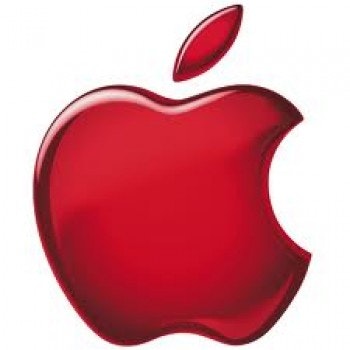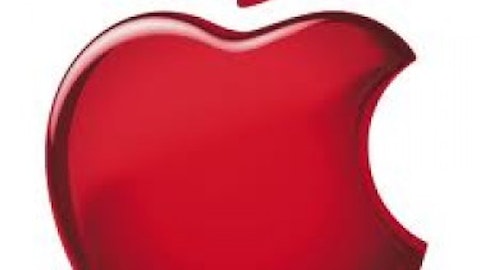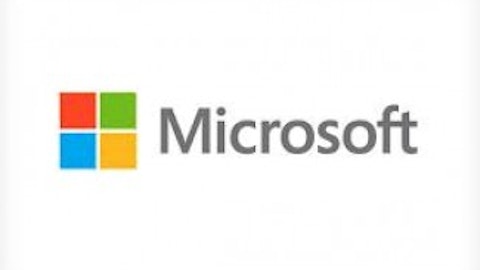In my opinion, the Nike+ FuelBand released by Apple Inc. (NASDAQ:AAPL) and NIKE, Inc. (NYSE:NKE) last year was a seminal product in health care tech. The FuelBand represents the first convergence of mobile technology and personal fitness accepted on a mainstream scale, and it boosted Nike’s equipment division profits 18% year over year in fiscal 2012.
The FuelBand, a fitness bracelet that could be tracked via an iPhone app, kicked off a wave of “smart” fitness products that resulted in the “social gamification” of personal fitness, as users began competing with friends over social networks.
However, the FuelBand’s success has influenced other areas of health care as well. New health and fitness apps hit the iOS and Android market every day, including heart rate monitors. exercise planners, and even device-dependent apps for monitoring diabetes.

Sanofi’s shining star
Sanofi SA (ADR) (NYSE:SNY)‘s iBGStar has been the most recognized product in this new field of “smart” diabetes products. The iBGStar, which was approved by the Food and Drug Administration in 2011, is the first blood glucose monitor that can synchronize with an iPhone or iPod Touch. The iBGStar connects to the bottom of either device and allows users to get blood glucose readings from the accompanying test strips.
By associating itself with Apple Inc. (NASDAQ:AAPL) and inking an exclusive sales agreement with U.K. retail pharmacy chain Boots, the product quickly gained positive consumer and media exposure. The iBGStar is sold on the classic razor-and-razor blades business model — the unit costs under $100, but a package of 50 test strips costs $65 or more.
For its next version, Sanofi SA (ADR) (NYSE:SNY) is looking to expand into other platforms like Google Inc (NASDAQ:GOOG) Android and look to wireless connections like Bluetooth to reduce physical connections on the platform.
The iBGStar also helps Sanofi SA (ADR) (NYSE:SNY) gain further recognition for its diabetes franchise — a rapidly growing segment that reported 12.9% year-over-year revenue growth last year thanks to strong sales of insulin products Lantus and Apidra. By comparison, Sanofi’s core pharmaceuticals segment reported a 7.1% decline.
Allscripts and MCT tap into the cloud
While Sanofi SA (ADR) (NYSE:SNY)’s product has established a foothold in the consumer market, advances have also been made in medical practices. Last year, leading electronic health record, or EHR, provider Allscripts Healthcare Solutions Inc (NASDAQ:MDRX) announced a partnership with diabetes management software maker MyCareTeam (MCT) to enhance treatment records for diabetic patients.
MCT integrated its software platform, MCT-Clinical for Diabetes, into Allscripts Healthcare Solutions Inc (NASDAQ:MDRX)’ EHR suite to receive vital readings from their glucose meters. The readings — which include blood glucose levels, caloric intake, weight, vital signs, and blood pressure — were sent to a cloud-based database.
By directly sending data over the Internet to an EHR, more accurate and updated records of diabetes patients can be kept. In addition, Allscripts Healthcare Solutions Inc (NASDAQ:MDRX)’ popular iPad app, Wand, makes these records easily accessible from the point of care.
MCT also offers an iOS app, BlueLoop, which allows diabetes patients to document, store, and share diabetes stats — such as blood glucose levels, carbohydrate intake, and current medications — with other users.
Other mobile solutions
Although they are the most established, Sanofi SA (ADR) (NYSE:SNY) and Allscripts Healthcare Solutions Inc (NASDAQ:MDRX) are only two major players in the field of mobile diabetes solutions. There are other products from smaller, privately held companies that investors should also be aware of.
Telcare’s wireless glucose meter is similar to the iBGStar, but it doesn’t require a smartphone. Once it takes a blood glucose reading from a strip, it can directly upload the medical information over cellular networks to their physicians. Users can also track the history of their uploaded data via its Diabetes Pal app for iOS and Android.
Glooko’s app uses a cable to connect to a variety of off-the-shelf glucose meters. The app, which is only available on iOS, takes readings from the meter and makes them available to patients and doctors.
In addition to these meter-reading apps, there is a wide selection of diabetic cookbooks, exercise regimens, carbohydrate trackers, and insulin schedulers available for smartphones.
The Foolish takeaway
An estimated 347 million people in the world have diabetes, which is projected to be the seventh leading cause of death globally by 2030 due to an aging population, more sedentary lifestyles, and unhealthy diets.
Although notable advances have been made in diabetes treatments, such as the experimental inhalable insulin from MannKind Corporation (NASDAQ:MNKD), the biggest challenge for diabetes patients is the maintenance of the disease.
Therefore, it’s encouraging to see mobile technology improve the quality of life for diabetes patients, and this ongoing convergence of health care and mobile tech could lead to major advances in treatments for other diseases as well.
The article The Mobile Future of Diabetes Treatments originally appeared on Fool.com.
Leo Sun owns shares of Apple. The Motley Fool recommends Apple and Nike. The Motley Fool owns shares of Apple and Nike.
Copyright © 1995 – 2013 The Motley Fool, LLC. All rights reserved. The Motley Fool has a disclosure policy.





